I last saw Jose Luis a few months ago and as a result of this visit, decided to write a post about his life and beliefs. (Posted 05/10/2023)
Over Christmas we were in contact again vía WhatsApp, catching up with the latest news.
Here is my update, followed by the original post. It was great to be in contact with him again.
Jose Luis – Update!
Jose Luis, as always, has been working hard. When I visited him last time he had not yet installed his weaving looms. They are now in full operation.

Meanwhile he is getting more sheep and is busy sheering the fleece and spinning the wool into balls of thread ready to weave.

He has no running water and relies on the stream running past his land for all his needs. As the flow of water varied a a lot, he had already dug one well. However since our last meeting, he has now completed a second well. The well is eight metres deep.

He made this without any machines or power tools, just a spade, trowels, bucket and a home made ladder. It took about two weeks to complete and has now provided a further source of water to irrigate his crops and ensure rich grazing land for his growing flock of sheep.

José Luis has no running water, nor electricity for his house and land. In our recent communication, he was very excited to tell me that the local government would soon be providing him with electricity. The street lights have already been installed outside his land.

The engineers have already marked on his wall where they are going to place the meter.
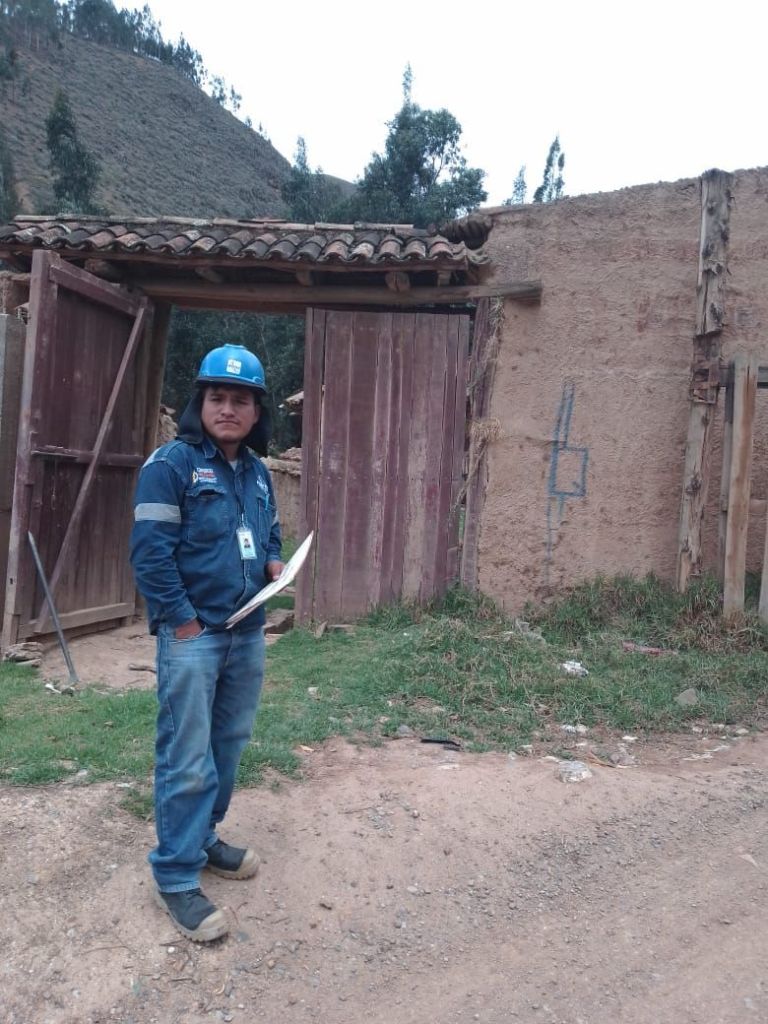
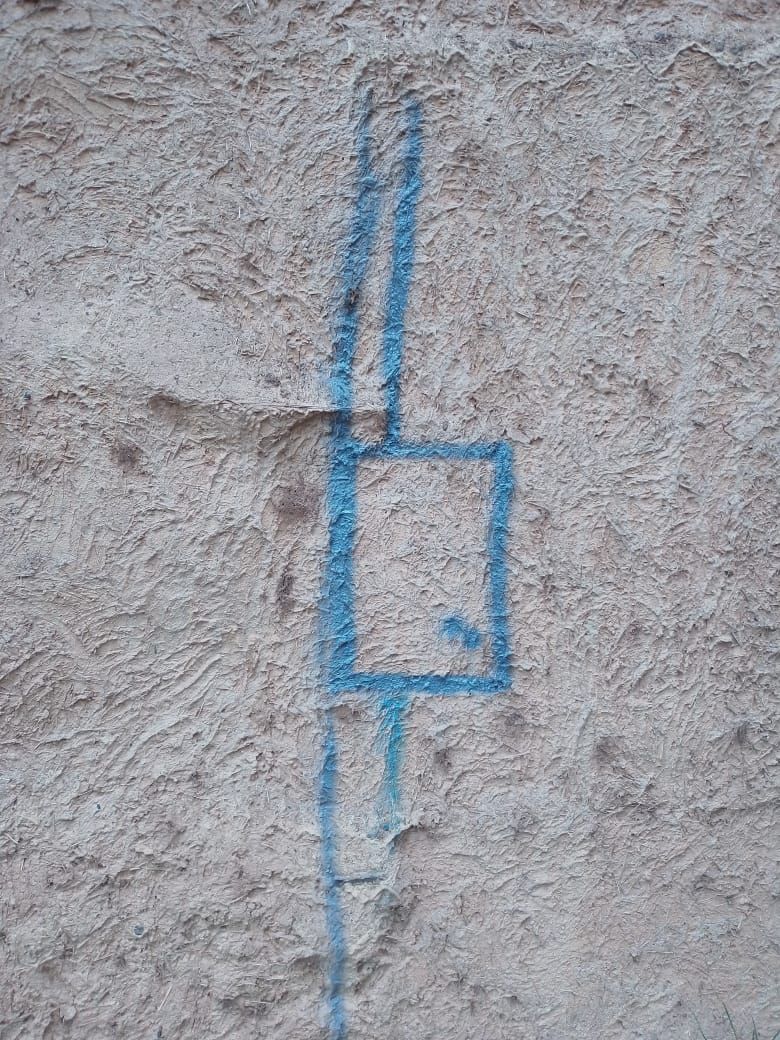
He is delighted as he will now be able to weave at nightime, freeing up time in the day for all his other many chores. At the moment, he has to walk all the way into town every time he needs to charge his mobile phone

As I mentioned in the original post, José Luis has developed an ingenious method to drip-feed his crops.

This system works well but is extremely time consuming. He has to fill each bottle every couple of days with water from the well. Once the electricity line is installed, a small simple electric water pump will save him hours and hours of work each week.
All this simply reminds me of how fortunate I am and how I take so many things for granted. How many of us have all the things we need but clamour for more and more and more “things” that are not really necessary.
Jose Luis is always smiling and involved, proud of all he has achieved on the land. As have mentioned before, I am humbled by him and it is an honour to write and share his accomplishments. I look forward to my next visit to see him again.
Read on…..to view the original post.
The Original Post
Sometimes you meet some extraordinary people. Jose Luis is one of these special people. I met him about twenty-five years ago and have had the pleasure of his company on a number of occasions. I met him in Tarma, a small town in the Peruvian highlands, where he lives.
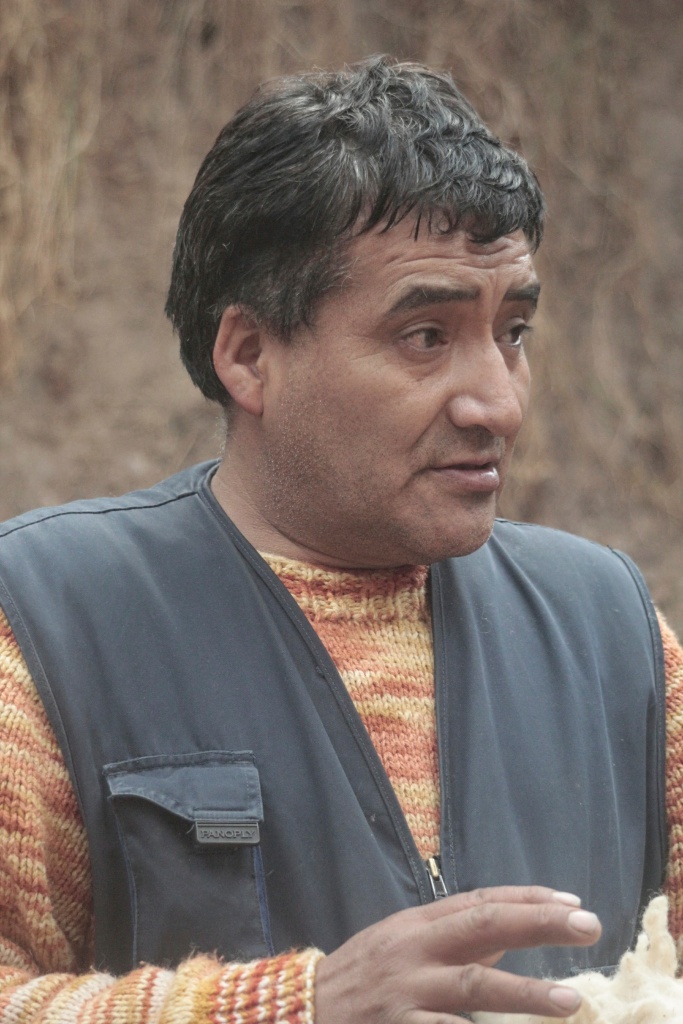
It takes about seven hours to drive to Tarma from Lima passing over the high mountain pass which forms the continental divide.

As you descend from the mountain pass, you drop below the tree line again and everything turns a lush green. Tarma is the garden town of Peru, famous for providing Lima with its beautiful freshly cut flowers.
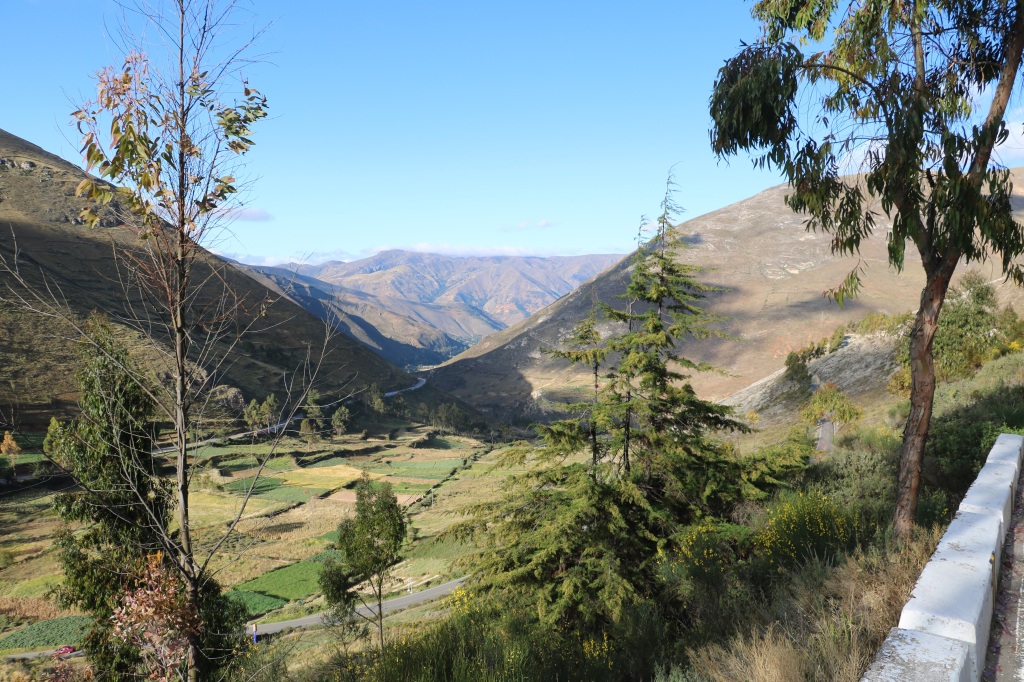
I used to regularly take groups of primary school students to Tarma in order to give them a taste of the Peruvian Sierra.

For many pupils, this was their first trip away from parents, and a journey into a different reality.
Jose Luis helped us with some of the planned activities, allowing the students, among other activities, to try their hand at weaving.

The Process of Weaving
At this time, his workshop was just across the street from the Hacienda Santa Maria where we stayed. (More about this historic building in another post.)
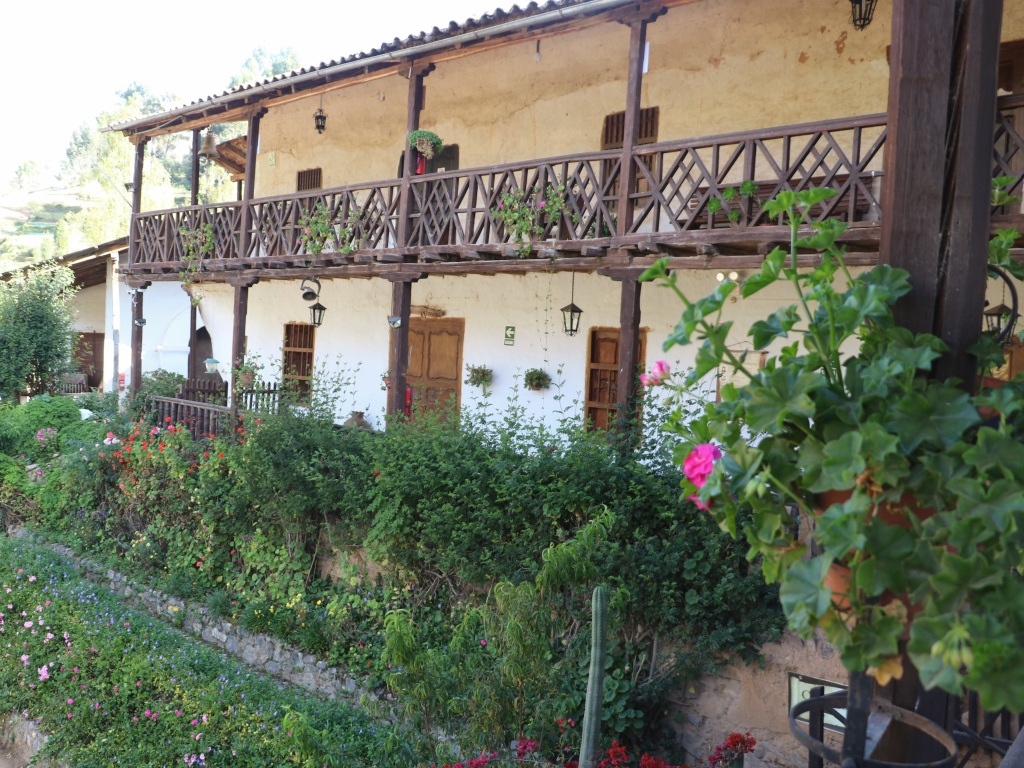
Jose Luis was a natural teacher, whose skills came from the University of Life. With the kids, he taught them about all the stages of weaving. The students would select the sheep wool and dye it in boiling water over a wood fire using natural colourings. They would learn how to card and spin the wool into thread, and then work on the looms.






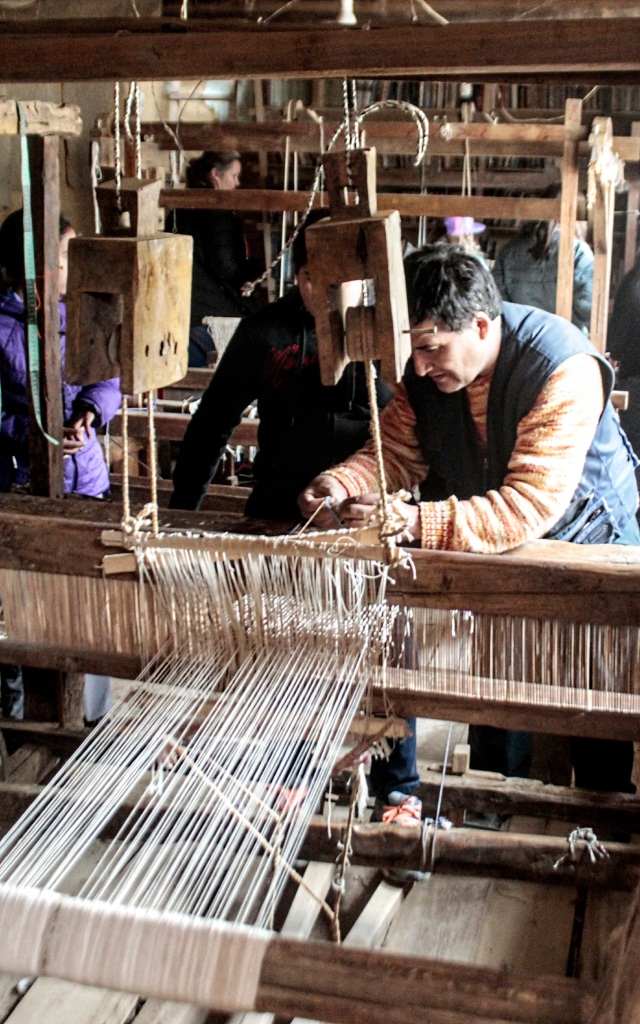


In the evening, with the the milky way sparkling in the clear mountain sky above, he would make a fire with eucalyptus logs and tell ancient folk tales to the enthralled listeners.

I particularly liked his story of how the beautiful Cantuta was accidentally killed by her true love …….which had all the students in tears. (After her tragic death a red flower, the Cantuta, grew in all the places where her drops of blood had fallen.)

Other stories of deities and ancient spirits were rather more scary. The students would listen spell-bound. There would be silence when he finished, until one student would say, “Tell us another one!”
A New Home
I last saw Jose Luis a couple of months ago. He was no longer living across the road from the Hacienda and had moved to a parcel of land which he is caretaking, just outside of town on the hillside. He told me that my car wouldnˋt make it there and advised me to take a moto-taxi. s
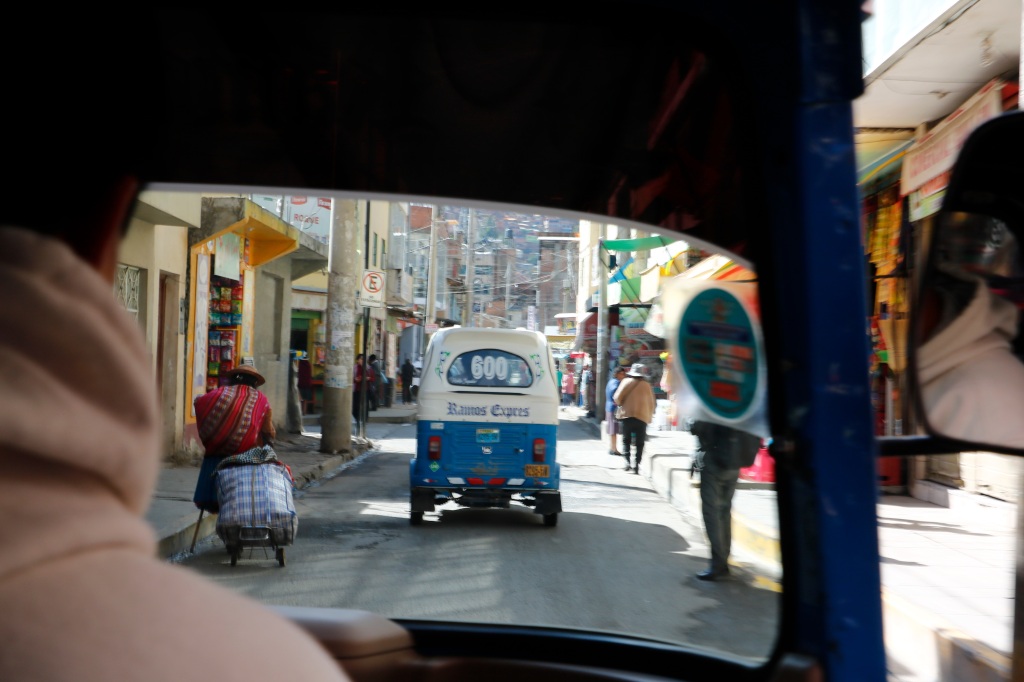
We slowly climbed up and up the side of the valley and I understood why it had been best to leave my car behind. The motor-taxi engine suffered in protest as we climbed the steep gradient. However, finally I arrived at our agreed meeting place where Jose Luis was waiting for me.
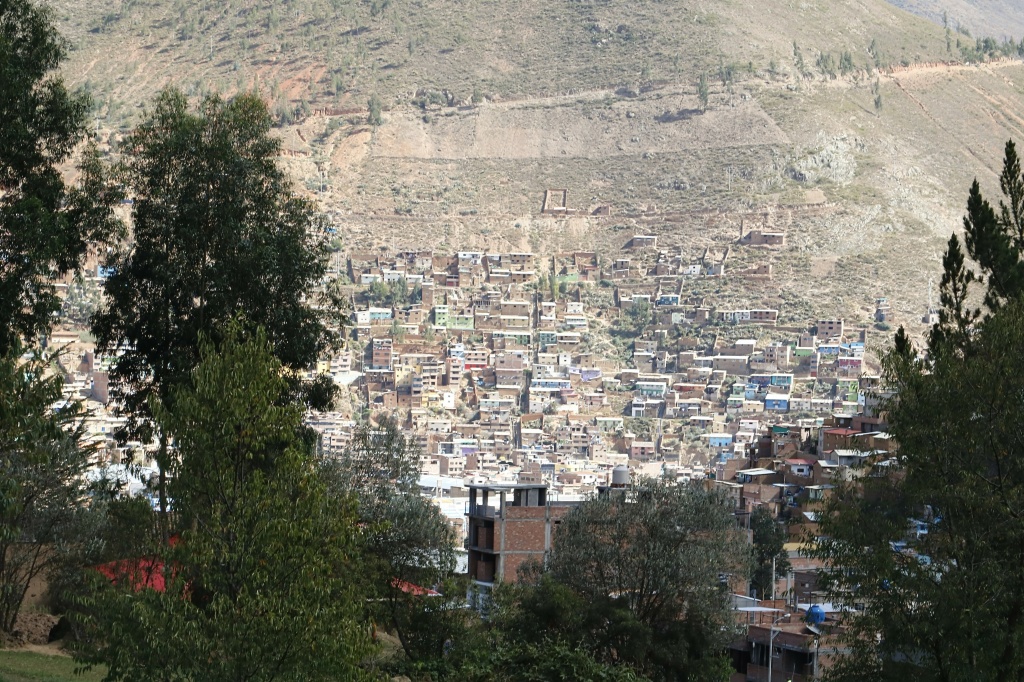
From there, the track continued further up the steep hill. I found myself breathing heavily as we climbed, feeling the effect of the altitude.
Puffing along, we eventually arrived at Jose Luis’ new home.

The land had been abandoned for a long time. The buildings had deteriorated and Jose Luis was rebuilding the walls with adobe blocks which he made from the earth on the land. To finish, the adobe walls were plastered using a past of mud and straw which he decorated with Inca images. This building project is still work in process…..little by little!
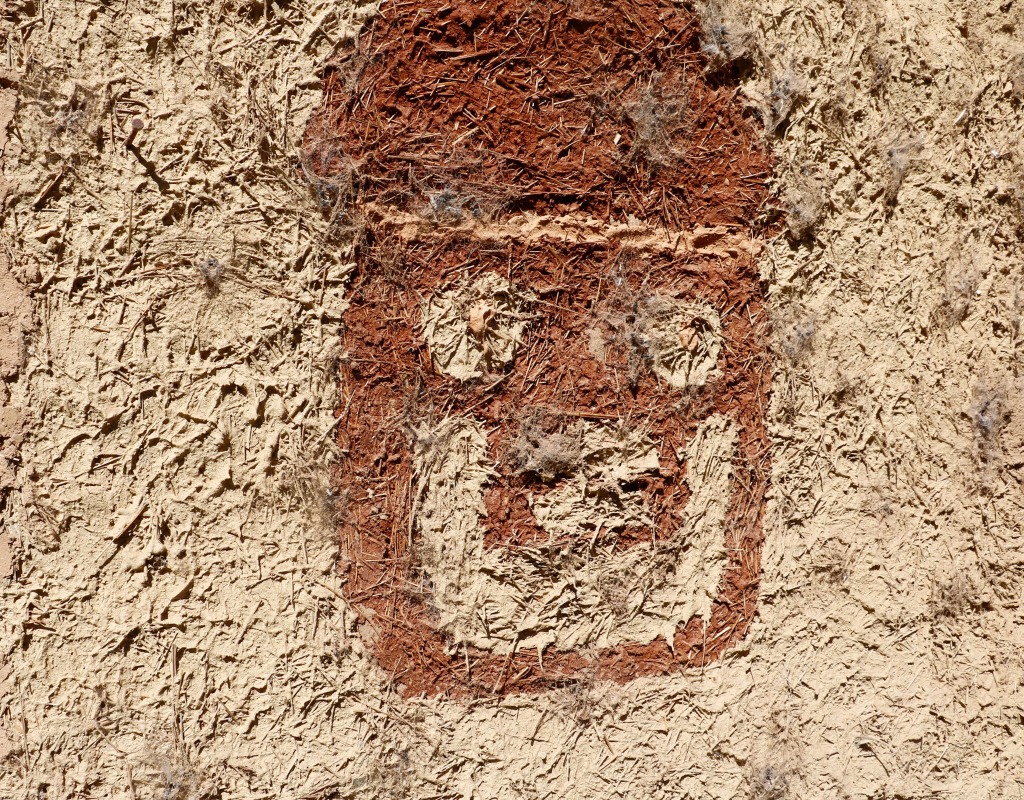
There were several rooms, all of them very basic. The cooking was still done using an open wood fire, the pots blackened by years of fire and smoke. There were few of the comforts which we are perhaps only too familiar with, but there was everything he needed in order to lead his simple life making the most of nature and the surrounding environment.


The parcel of land was quite large and extended up the hillside,
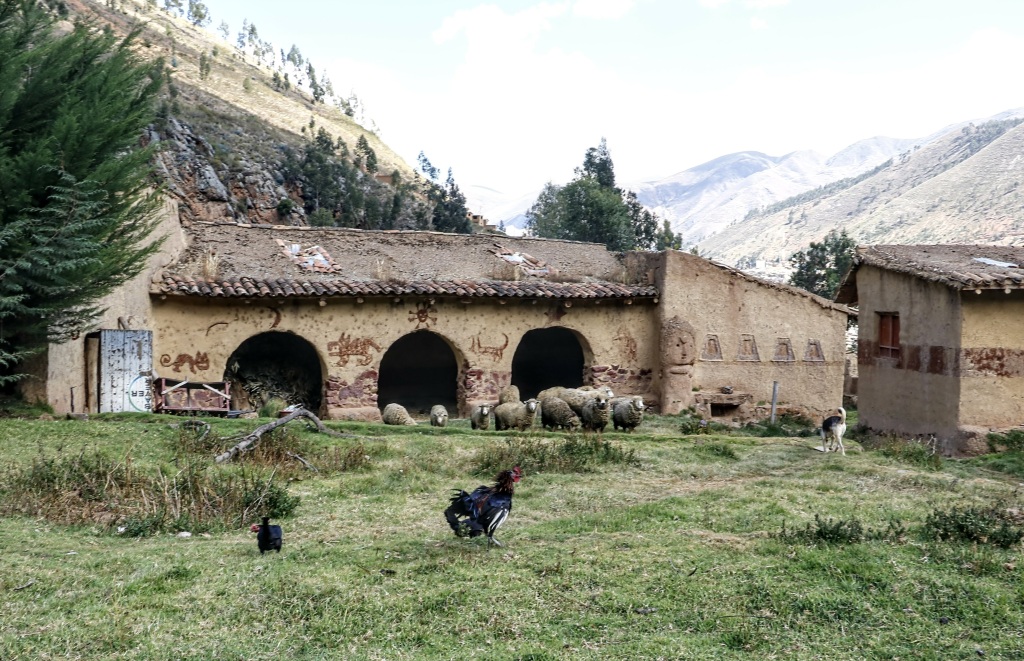
Jose Luis had divided the land into two parts, one half for growing crops and the other half, with grass for his sheep to graze. He built another adobe wall to divide the two parts.
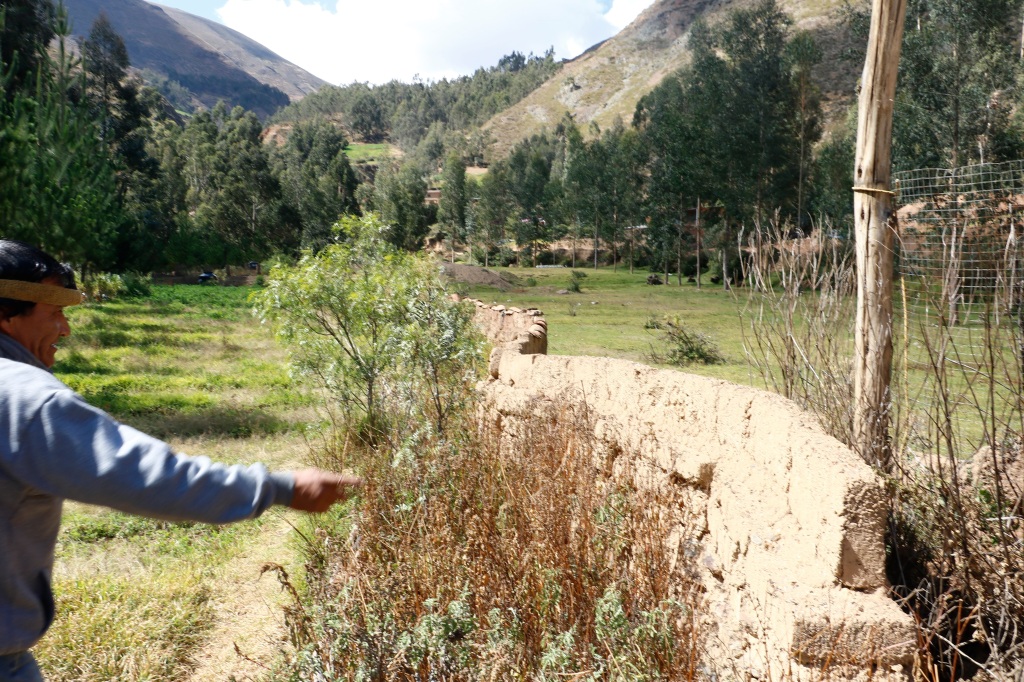
When I visited him he hadnˋt yet installed his weaving looms, but would do so in the following weeks. His efforts, up to this moment, were focussed on making his smallhoding as sustainable as possible. As we talked, it was time for his flock of sheep to come out and have a grassy breakfast!
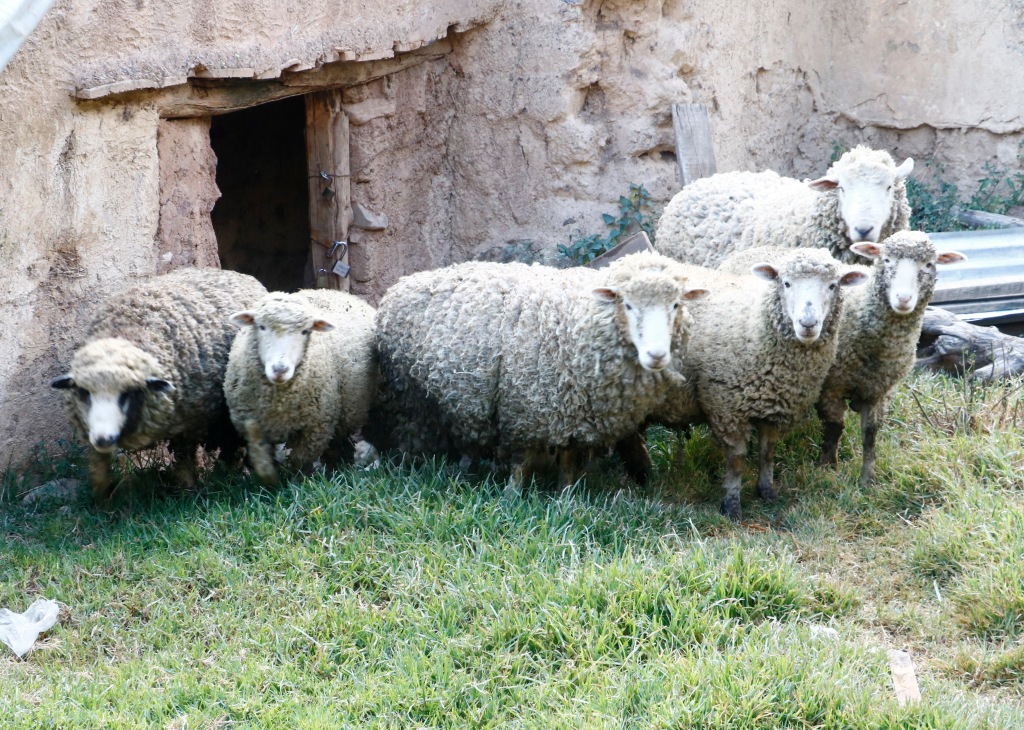
From now on he would have his own wool from his sheep and therefore control the whole of the creative weaving experience from start to finish.
He also had a flourishing community of “cuys”. Cuys are guinea pigs, a culinary delicacy in the Peruvian Sierra, and therefore a useful means of income. He was also cultivating a number of crops for his own use or to sell. He indeed had little need to buy many things from shops.

His land was not connected to a municipal water system so he needed to rely on a small stream running down one side of his land for water. However, this source was unreliable and sometimes insufficient for his needs and was probably the reason why the land had been previously abandoned.

Jose Luis refused to be beaten, and dug himself a well. and then found ingenious ways of distributing the water to where it was most needed on his land.

He devised a clever way of transporting water from his well to the top part of his land by building slope-defying water towers to raise the water from below. (Difficult to explain, but this really worked amazingly well!) He would also slowly drip-feed his crops using bottles with small holes pierced in the bottom, partly filled by mud.
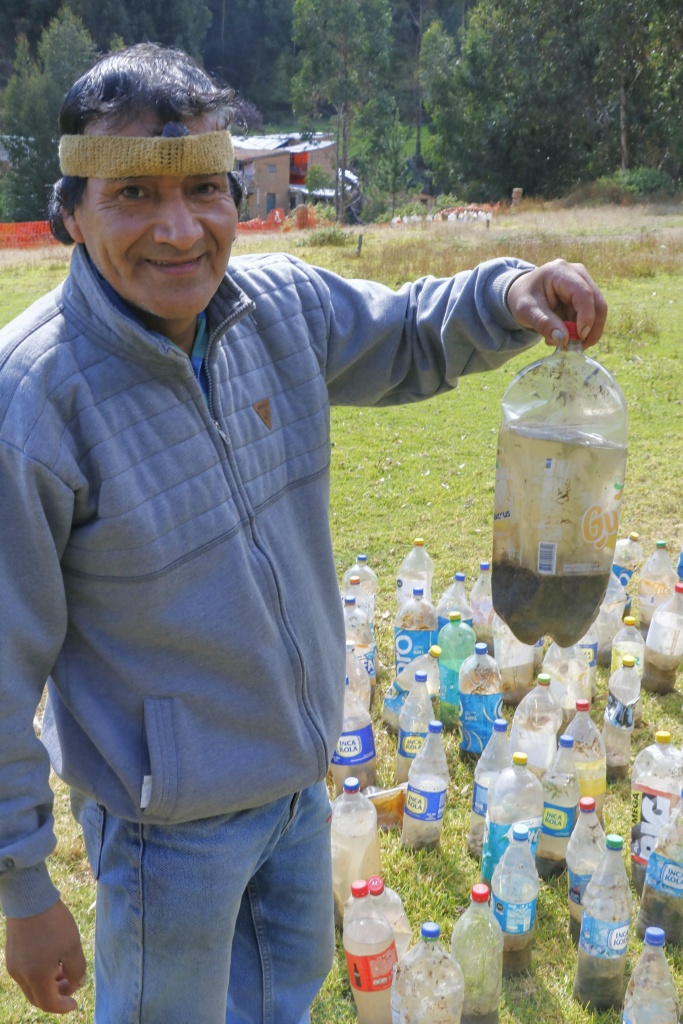
Jose Luis mentioned that the solutions to these irrigation problem had come to him in his dreams, an answer to his problems given to him from the Apus, ( the sacred Inca Mountains). I had always noticed that he had a small altar in his house. but I had never really questioned him about this.

I saw that in his new abode, he had reconstructed the altar again, This time we sat down and talked about the purpose of his altar and his beliefs. He explained that he was a follower of the cosmovision of the Incas and that these beliefs guided his whole life.


He would sit in front of his altar for at least half an hour every day, in order to converse with the Apus, the Inca gods of the mountains. They would in turn guide him by coming to him in his dreams.

The altar has relics from the inca times, stones and carvings, as well as the skulls from Inca remains which now served as mediums for speaking to the Apus. He fastened a sacred carved stone to his forehead before starting his rituals.

I asked him if there were many people still following these Inca traditions. He felt that this was very much in decline in these modern times and that many people had lost the essence of sprituality, and in many cases had lost their way in life and nature. He had regular contact with about twenty-five local people who actively shared with him, these ancient beliefs.
.However he is well known in the countryside around and local inhabitants come to him to ask for his wisdom and advice. Jose Luis then finds them answers from the Apus through a ritual with coca leaves.
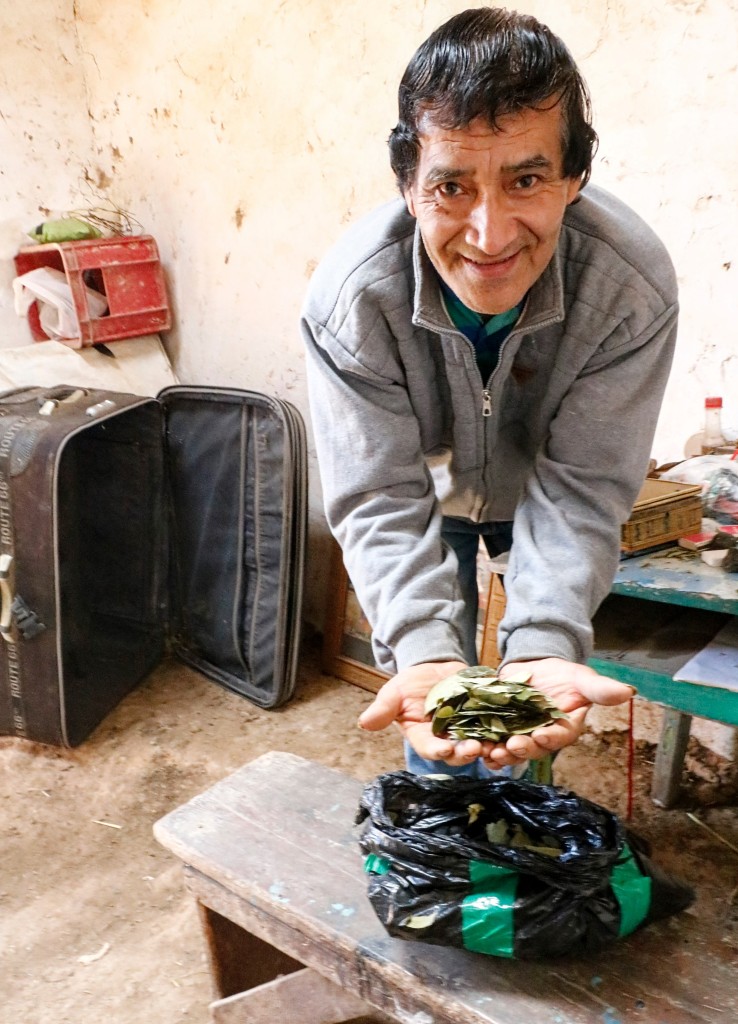
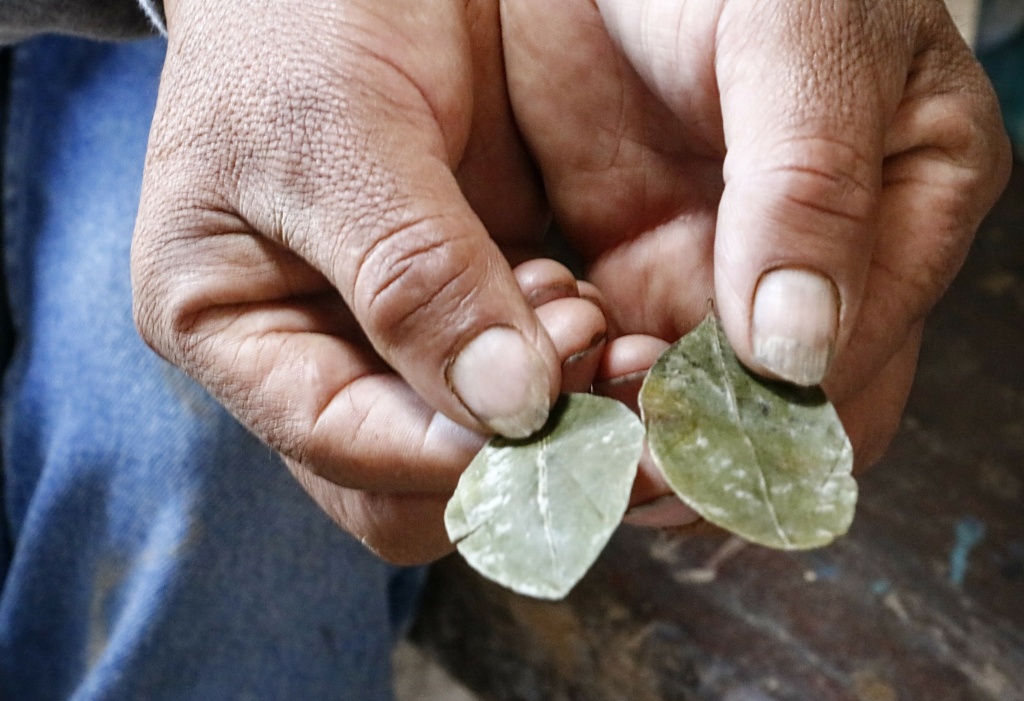
With his positive energy and faith, Jose Luis faces the future. He feels that he has everything he needs. He builds with the materials of the earth, he eats what he produces on his land, Although he has few possessions, he does not feel the need to own many things, He cooks using wood. The few things he needs to buy he does through selling his own produce, the articles he weaves and through his occasional services as a guide for tourists.

I am in awe of this man and his ability to find his happiness in the simple things of life. He was astonished when I asked him if he would ever want to live in a town! Indeed, we both live in two very different worlds. I am reminded of how useless I would be to survive even one day in his reality. We have become so far detatched from nature, and it took me this further visit with Jose Luis to remind me of this fact. I am humbled by this man who knows and appreciates how to touch the earth and become one with nature..

UPDATE 15/10/23
Was just talking to Jose Luis a day ago. He tells me that he has just finished digging another well. He found water at 8 metres. It takes him between ten days and two weeks of digging. I asked him if this was dangerous. He replied that he had once worked in an artisan mine, so knew what he needed to do !

Leave a comment